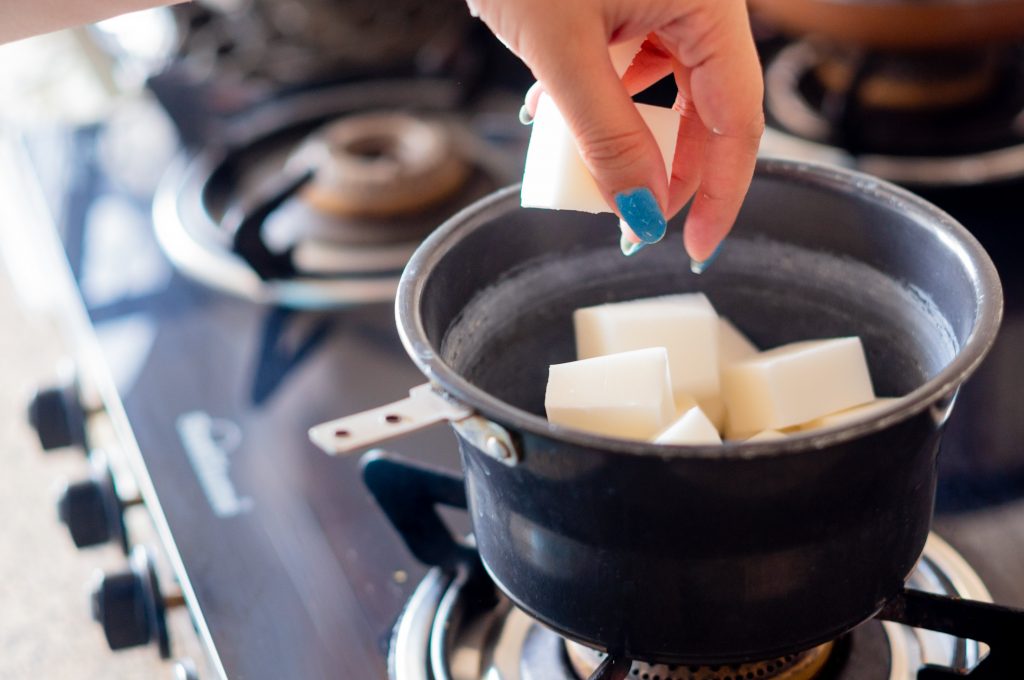Wax warmers have become a popular alternative to candles, allowing you to enjoy the pleasant scent of wax melts without the risk of an open flame. However, many people wonder, “Can wax warmers catch on fire?” While they are generally safe, improper usage or malfunctioning devices could pose a fire risk under certain conditions.
In this comprehensive guide, we will explore the risks associated with wax warmers, safety precautions you can take, and answers to common questions to ensure you’re using wax warmers safely in your home.
What Are Wax Warmers and How Do They Work?
Wax warmers are devices that melt scented wax, releasing fragrance into the air. There are two primary types: electric wax warmers and tealight-powered warmers. Unlike candles, which require an open flame, wax warmers rely on a heat source to melt the wax.
- Electric Wax Warmers: These use a heating element or light bulb to melt wax cubes or tarts.
- Tealight Wax Warmers: These rely on a small tealight candle beneath the wax dish to melt the wax.
By eliminating the need for an open flame, wax warmers are often considered safer than traditional candles. However, fire hazards may still arise from improper use or faulty equipment.
Can Wax Warmers Catch on Fire?

While wax warmers are designed with safety in mind, there are some circumstances where they could catch on fire. The risk of fire increases if the warmer overheats, is placed near flammable materials, or if there are issues with the electrical components in an electric warmer.
Common Fire Risks with Wax Warmers:
- Overheating: Leaving an electric warmer on for extended periods or using it with faulty wiring could cause overheating, leading to fire hazards.
- Damaged Electrical Cords: Frayed or exposed cords can spark and ignite nearby materials.
- Tealight Warmers: Since tealight warmers use an open flame, they carry an inherent fire risk if placed near flammable objects or left unattended.
- Flammable Surfaces: Placing wax warmers on or near curtains, papers, or other flammable surfaces increases the risk of fire.
How to Safely Use Wax Warmers
To minimize the risk of fire, it’s important to use wax warmers according to the manufacturer’s instructions and follow basic safety guidelines.
Safety Tips for Wax Warmers:
- Do not leave wax warmers unattended, especially if using a tealight candle warmer.
- Place wax warmers on a stable, heat-resistant surface, away from flammable materials.
- Inspect electric warmers regularly for signs of wear, including frayed cords or faulty plugs.
- Avoid prolonged use: Turn off electric wax warmers after the recommended time (usually 4-8 hours).
- Use tealight candles with caution: Never let the flame burn unattended, and ensure the tealight is fully extinguished after use.
Common Questions About Wax Warmers and Fire Hazards
1. Can Wax Warmers Overheat and Cause a Fire?
Yes, electric wax warmers can overheat if left on for too long or if they malfunction. Ensure your wax warmer has an automatic shut-off feature or use a timer to prevent overheating.
2. Is It Safe to Leave a Wax Warmer On Overnight?
It is not recommended to leave a wax warmer on overnight, especially tealight-powered warmers, which involve an open flame. For electric warmers, always check the manufacturer’s guidelines, and if possible, avoid leaving them on while unattended for long periods.
3. Can Wax Melts Catch Fire?
Wax melts themselves are designed to melt at low temperatures and are generally considered safe. However, using an open flame (like with tealight warmers) or overheating the wax with faulty equipment could cause it to ignite. It’s crucial to follow safety guidelines to avoid such scenarios.
4. Can Wax Warmers Cause Smoke?
Yes, if a wax warmer overheats, it could cause the wax to burn or smoke. If you notice smoke or a burning smell, turn off the warmer immediately, unplug it, and allow it to cool before inspecting for damage.
5. Can You Use Wax Warmers on Wood or Plastic Surfaces?
It’s not recommended to use wax warmers on wood, plastic, or other flammable surfaces. Always place your warmer on a heat-resistant surface such as glass, ceramic, or metal, and keep it away from materials that can easily catch fire.
6. How Long Can You Safely Run a Wax Warmer?
Most electric wax warmers can run safely for 4-8 hours, depending on the model. Always check the manufacturer’s instructions and avoid running the warmer for prolonged periods to prevent overheating.
7. Can I Use Essential Oils in Wax Warmers?
Some wax warmers can be used with essential oils, but it’s important to check if your specific warmer is designed for that purpose. Using essential oils in warmers that aren’t designed for them could cause malfunction or overheating.
8. Do Wax Warmers Consume a Lot of Electricity?
Electric wax warmers are typically low-power appliances and do not consume a significant amount of electricity. They usually use the same amount of energy as a small light bulb. However, using the warmer for extended periods can add up over time.
9. What Should You Do If Your Wax Warmer Starts Smoking?
If you notice smoke coming from your wax warmer, turn it off immediately and unplug it. Let the warmer cool before inspecting for damage or overheating. If the problem persists, discontinue use and replace the warmer to avoid any risk of fire.
10. Can Tealight Warmers Cause a Fire If Left Unattended?
Yes, tealight warmers pose a fire risk if left unattended since they involve an open flame. Always extinguish the tealight once the wax has melted or when leaving the room.
11. Can Wax Warmers Burn Out Like Light Bulbs?
The heating element or bulb in electric wax warmers can burn out over time. When this happens, the warmer will stop working, but it doesn’t typically pose a fire hazard. Be sure to replace the heating element or bulb with the correct part, as specified by the manufacturer.
12. Can Wax Warmers Catch on Fire If Left on All Day?
While it’s uncommon, leaving a wax warmer on for too long—especially an older or malfunctioning model—can lead to overheating and increase the risk of fire. Use a timer or manually turn off the warmer after a few hours of use.
13. What Type of Wax Warmers Are Safest to Use?
Electric wax warmers with automatic shut-off features or timers are considered the safest option. They eliminate the risk of an open flame and reduce the chance of overheating. Be sure to choose models from reputable brands that adhere to safety standards.
14. How Do You Clean a Wax Warmer Safely?
To clean a wax warmer, allow it to cool completely. Once cooled, carefully remove any leftover wax with a soft cloth or a plastic spatula. Never use sharp tools that could damage the warmer’s surface, and always unplug the unit before cleaning.
15. How Can You Ensure Wax Warmers Don’t Overheat?
To avoid overheating, always follow the manufacturer’s guidelines and never leave the warmer on for longer than the recommended duration. Many modern electric wax warmers are equipped with automatic shut-off features that prevent them from running too long. If your warmer doesn’t have this feature, using a timer can help ensure it doesn’t overheat.
16. Can Using Poor-Quality Wax in Warmers Increase the Risk of Fire?
Yes, using low-quality or unsuitable wax can increase the risk of overheating or uneven melting, which may lead to fire hazards. Always use wax melts specifically designed for wax warmers. Low-quality wax may contain additives that can cause the wax to burn unevenly or release harmful fumes.
17. What Are Some Signs That Your Wax Warmer May Be Faulty?
Signs of a faulty wax warmer include flickering bulbs, unusual noises, burning smells, or the wax taking too long to melt. If you experience any of these issues, stop using the warmer immediately and inspect it for damage. Faulty wiring or worn-out heating elements can lead to overheating and increase the risk of a fire.
18. How Can You Safely Dispose of Old or Damaged Wax Warmers?
To dispose of an old or damaged wax warmer, ensure it is unplugged and completely cooled down. Remove any leftover wax, and dispose of electrical components properly by taking the warmer to a designated e-waste facility. Do not throw it away with regular household trash as improper disposal can pose environmental risks.
19. Can Pets Knock Over Wax Warmers and Cause Fires?
Yes, pets can easily knock over wax warmers, especially tealight-powered ones with an open flame. If knocked over, this could lead to wax spills or even start a fire. Always place your wax warmer in a pet-safe location, out of reach from curious pets, and ensure it is on a stable, heat-resistant surface.
20. What Are Some Eco-Friendly Alternatives to Electric Wax Warmers?
For eco-conscious consumers, there are solar-powered wax warmers or natural beeswax melts available that reduce the environmental impact of using electric warmers. Solar-powered warmers are an excellent alternative as they use renewable energy, and natural wax melts are biodegradable, making them safer for the environment.
21. What Should You Do If Your Wax Warmer Is Giving Off a Burning Smell?
If your wax warmer starts emitting a burning smell, turn it off immediately and unplug it. A burning smell may indicate overheating, faulty wiring, or damaged components. Allow the unit to cool, and carefully inspect it for signs of damage. If the issue persists, it’s best to replace the warmer to avoid any safety risks.
22. Can Wax Warmers Cause Allergic Reactions If Left On for Too Long?
Leaving a wax warmer on for too long can cause the wax to overheat and release excessive fumes, which may trigger allergic reactions or respiratory irritation in sensitive individuals. Always monitor the warmer and use it in a well-ventilated space, especially if you or others in your household are sensitive to strong scents or airborne particles.
23. Can Wax Warmers Trigger Smoke Alarms?
Yes, under certain conditions, a malfunctioning wax warmer or one that overheats and causes smoke could potentially trigger a smoke alarm. To prevent this, ensure that your wax warmer is in good working condition, use it for the recommended duration, and never leave it unattended.
Conclusion: Are Wax Warmers Safe?
In conclusion, wax warmers are generally safe when used correctly, but it’s important to follow proper safety guidelines to minimize the risk of fire or malfunction. Always inspect your wax warmer for signs of damage, use high-quality wax melts, and never leave the warmer unattended, especially if using a tealight-powered warmer. By taking these precautions, you can enjoy the benefits of scented wax melts without any worry.
Whether you’re using an electric wax warmer or a tealight candle warmer, proper use and maintenance are key to preventing accidents. As long as you follow the manufacturer’s instructions and use common sense, the risk of fire remains minimal.
